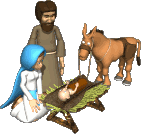


The Traditional Yule Holiday verses Christmas

Yule was the winter solstice celebration of the Germanic pagans. In Germanic Neopaganism it is one of the eight solar holidays, or sabbats, where Yule is celebrated on the winter solstice: in the northern hemisphere, circa December 21, and in the southern hemisphere, circa June 21.
"Yule" and "Yuletide" are also archaic terms for Christmas, sometimes invoked in songs to provide atmosphere. Indeed, this is the only meaning of "Yule" accepted by either the full Oxford English Dictionary or the Concise Oxford Dictionary, and people unfamiliar with ancient pagan traditions will not distinguish between Yule and Christmas. This usage survives in the term "Yule log"; it may also persist in some Scottish dialects.
Of the contested origin of J?l, one popular but factually unlikely connection is to Old Norse hj?l, wheel, to identify the moment when the wheel of the year is at its lowpoint, ready to rise again. Linguists suggest that J?l has been inherited by Germanic languages from a pre-Indo-European substrate language and either borrowed into Old English from Old Norse or directly inherited from Proto-Germanic. Other instances refer to the ancient gaulic word "helle" which means light. We thus find half of the word No?l.
A far more likely origin for the term "Yule" can be traced via the Old English/Anglo-Saxon term "G?ol", which is strongly connected with the word for yellow - "geol". One may see the evolution of this word for yellow throughout the Germanic and Scandinavian countries: German "gelb", Norwegian "gul", Danish "gul", Gaelic 'geal', Dutch "geel", Swedish "gul", Frisian "giel", even Italian "giallo", Lithuanian "geltonas" and Romanian "galben". The Old English G?ol became the Middle English "Yole" and finally modern Yule, whereas the word geol or geolu evolved to become modern yellow. This same gradual divergence of terms also occurred in the other languages mentioned. All of these terms ultimately stem from the Indo-European root "ghel-" meaning "to shine". Since the Yule festival is native to the northern European lands, where midwinter is a time of short days and little light, it is a strong possibility that the original sense of Yule as a midwinter festival had much to do with "bringing back the sun" and creating bright, shining, gold or yellow sun- and fire-themed decorations and festivities. Another connection may be to the brightness of the sunlight glaring off the white snow, or simply the bright glare of the sun itself as it rides low on the horizon. Therefore, likely meanings may be "Shining Time", "Bright Time" or "Golden Time".
In the Scandinavian Germanic languages, the term Jul covers both Yule and Christmas, and is also occasionally used to denote other holidays in December, e.g., "j?disk jul" or "judisk jul" (tr. "Jewish Yule") for Hanukkah. The word "jul" has also been borrowed into the neighboring Finnic languages, most notably to Finnish and Estonian (where it has been modified to "joulu" and "j?ul" , respectively, and denotes Christmas in modern usage), although the Finnic languages have a linguistic origin different from Germanic languages. In Old English, ge?la originally referred to the month of December. The meaning later narrowed to mean Christmas with the coming of Christianity in Anglo-Saxon England.
Traditional Yule
What is certain, is that Yule celebrations at the winter solstice predate Christianity, and though there are numerous references to Yule in the Icelandic sagas, there are few accounts of how Yule was actually celebrated, beyond the fact that it was a time for feasting. 'Yule-Joy', with dancing, continued through the Middle Ages in Iceland, but was frowned upon when the Reformation arrived. It is, however, known to have included the sacrifice of a pig for the god Freyr, a tradition which survives in the Scandinavian Christmas ham.
The confraternities of artisans of the 9th century, which developed into the medieval guilds, were denounced by Catholic clergy for their "conjurations" when they swore to support one another in coming adversity and in business ventures. The occasions were annual banquets on December 26, "feast day of the pagan god Jul, when it was possible to couple with the spirits of the dead and with demons that returned to the surface of the earth... Many clerics denounced these conjurations as being not only a threat to public order but also, more serious in their eyes, satanic and immoral. Hincmar, in 858, sought in vain to Christianize them" (Rouche 1987, p. 432).
Connection to modern Christmas
Many of the symbols associated with the modern holiday of Christmas such as the burning of the Yule log, the eating of ham, the hanging of boughs, holly, mistletoe, etc. are apparently derived from traditional northern European Yule celebrations. When the first missionaries began converting the Germanic peoples to Christianity, they found it easier to simply provide a Christian reinterpretation for popular feasts such as Yule and allow the celebrations themselves to go on largely unchanged, rather than trying to suppress them. The Scandinavian tradition of slaughtering a pig at Christmas (see Christmas ham), and not in the autumn, is probably the most salient evidence for this. The tradition derives from the sacrifice to the god Freyr at the Yule celebrations. Halloween and Easter are theorized to have been likewise assimilated from northern European pagan festivals.
English historian Bede's Historia ecclesiastica gentis Anglorum ("Ecclesiastic History of the English People") contains a letter from Pope Gregory I to Saint Mellitus, who was then on his way to England to conduct missionary work among the heathen Anglo-Saxons. The Pope suggests that converting heathens is easier if they are allowed to retain the outward forms of their traditional pagan practices and traditions, while recasting those traditions spiritually towards the one true God instead of to their pagan gods (whom the Pope refers to as "devils"), "to the end that, whilst some gratifications are outwardly permitted them, they may the more easily consent to the inward consolations of the grace of God". [1] The Pope sanctions such conversion tactics as Biblically acceptable, pointing out that God did much the same thing with the ancient Israelites and their pagan sacrifices.



|
Most pet owners would NEVER knowingly poison their animal, but many do! They feed their pets nutritional supplements that contain artificial chemicals in amounts toxic to many types of animals and even children. We recommend NU-VET products. These natural supplements help meet the nutritional needs of your pet, without exposing them to the risk of artificial chemicals. Call 1-800-474-7044, Discount Code 42050, to order by phone. Order NuVet online. Click on the e-store link. Save BIG on supplements, toys, flea collars &more! |
The Make Life Work For You Family of Helpful Websites
Politics and Entertainment Commentaries
Appalling Behavior - Celebrities Behaving Badly
APA - Dog and Puppy Registrations
ACA - Chihuahua Dog and Puppy Registrations
St Patrick's Day Around The World
Good, bad and Funny Excuses For Being Late
Doggiestyle Dog Advice & Resources
